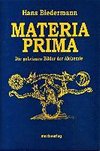
Mid-Eastern Athletic Conference
Source: Wikipedia. Pages: 39. Chapters: Morgan State University, Norfolk State University, Hampton University, North Carolina A&T Aggies, Howard University, North Carolina Agricultural and Technical State University, Delaware State University, South Carolina... Viac o knihe
Produkt je dočasne nedostupný
15.22 €
bežná cena: 17.30 €
O knihe
Source: Wikipedia. Pages: 39. Chapters: Morgan State University, Norfolk State University, Hampton University, North Carolina A&T Aggies, Howard University, North Carolina Agricultural and Technical State University, Delaware State University, South Carolina State University, Delaware State Hornets football, Morgan State Bears football, Florida A&M University, Pelican Bowl, North Carolina A&T - North Carolina Central rivalry, University of Maryland Eastern Shore, Bethune-Cookman University, Coppin State University, Aggie Stadium, Corbett Sports Center, Lawrence Joel Veterans Memorial Coliseum, 2010 MEAC Women's Basketball Tournament, Bethune-Cookman Wildcats, Heritage Bowl, Florida A&M Rattlers, Teaching Gym, Bragg Memorial Stadium, Morgan State Bears men's basketball, Municipal Stadium, William "Dick" Price Stadium, Hughes Stadium, Physical Education Complex, Jake Gaither Gymnasium, Norfolk State Spartans football, Alumni Stadium, Oliver C. Dawson Stadium, Armstrong Stadium, William H. Greene Stadium, O'Kelly-Riddick Stadium, Burr Gymnasium, SHM Memorial Center, Hampton Convocation Center, Talmadge L. Hill Field House, Joseph G. Echols Memorial Hall, Hytche Athletic Center, Moore Gymnasium. Excerpt: Morgan State University, formerly Centenary Biblical Institute (1867-1890), Morgan College (1890-1939) and Morgan State College (1939-1975), is located in residential Baltimore, Maryland, United States. Morgan is a historically black college and Maryland's designated public urban university. It is the largest HBCU in the state of Maryland. As Maryland's "public urban university", Morgan is committed to providing opportunity of higher education to all persons regardless of socio-economic status. Though it is a public institution, Morgan is not a part of the University System of Maryland; the school opted out of becoming a part of the system; it has its own governing Board of Regents. Morgan was founded in 1867 as the Centenary Biblical Institute, a Methodist Episcopal seminary, to train young men in the ministry. At the time of his death, Thomas Kelso, co-founder and president of the board of directors, endowed the Male Free School and Colored Institute through a legacy of his estate. It later broadened its mission to educate both men and women as teachers. The school was renamed Morgan College in 1890 in honor of the Reverend Lyttleton Morgan, the first chairman of its Board of Trustees, who donated land to the college. In 1915 Andrew Carnegie gave the school a grant of $50,000 for a central academic building. The terms of the grant included the purchase of a new site for the College, payment of all outstanding obligations, and the construction of a building to be named after him. The College met the conditions and moved to its present site in northeast Baltimore in 1917. Then a controversy exploded: in 1918, the white community of Lauraville was incensed that the Ivy Mill property, where Morgan was to be built, had been sold to a "negro" college. It attempted to have the sale revoked by filing suit in the circuit court in Towson, which dismissed the suit. They then appealed the case to the state Court of Appeals. The appellate court upheld the lower court decision,
- Vydavateľstvo: Books LLC, Reference Series
- Formát: Paperback
- Jazyk:
- ISBN: 9781156131473



 Anglický jazyk
Anglický jazyk 





 Nemecký jazyk
Nemecký jazyk 


